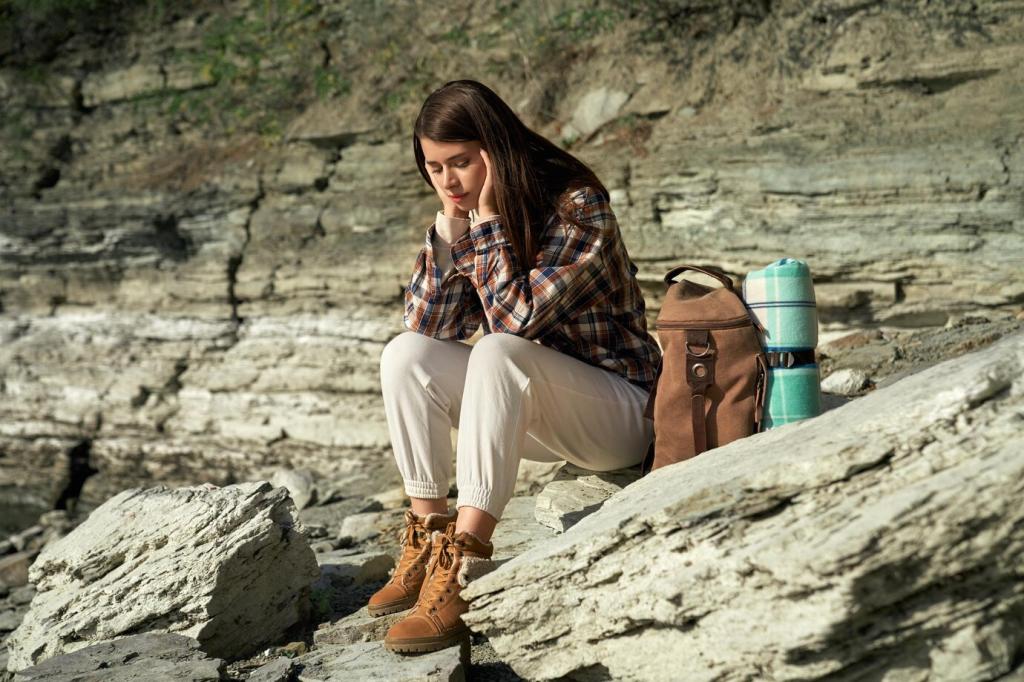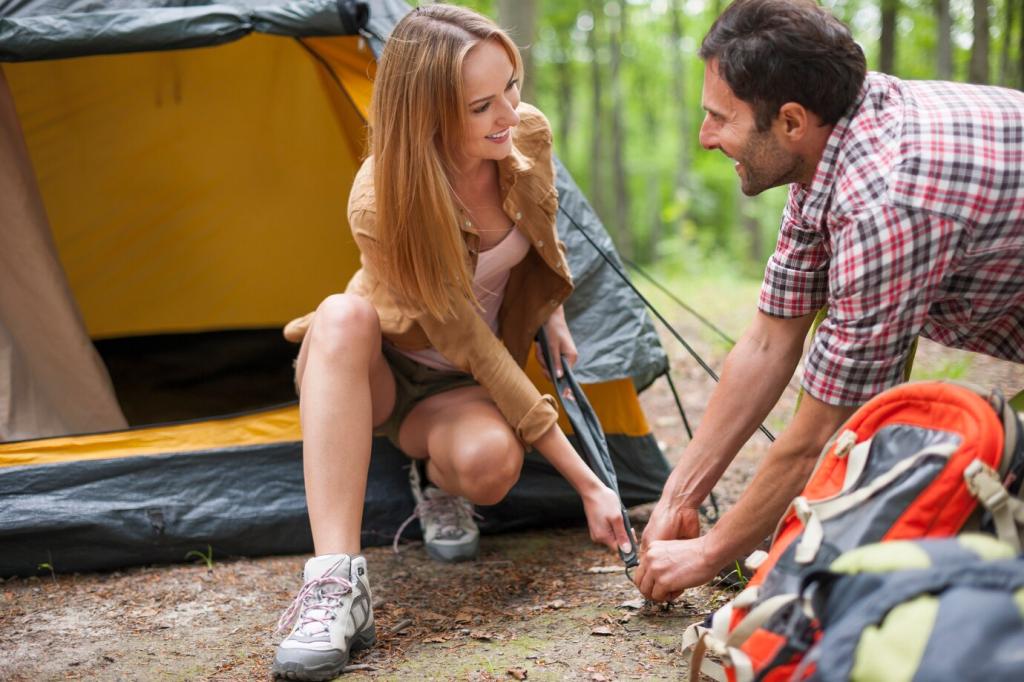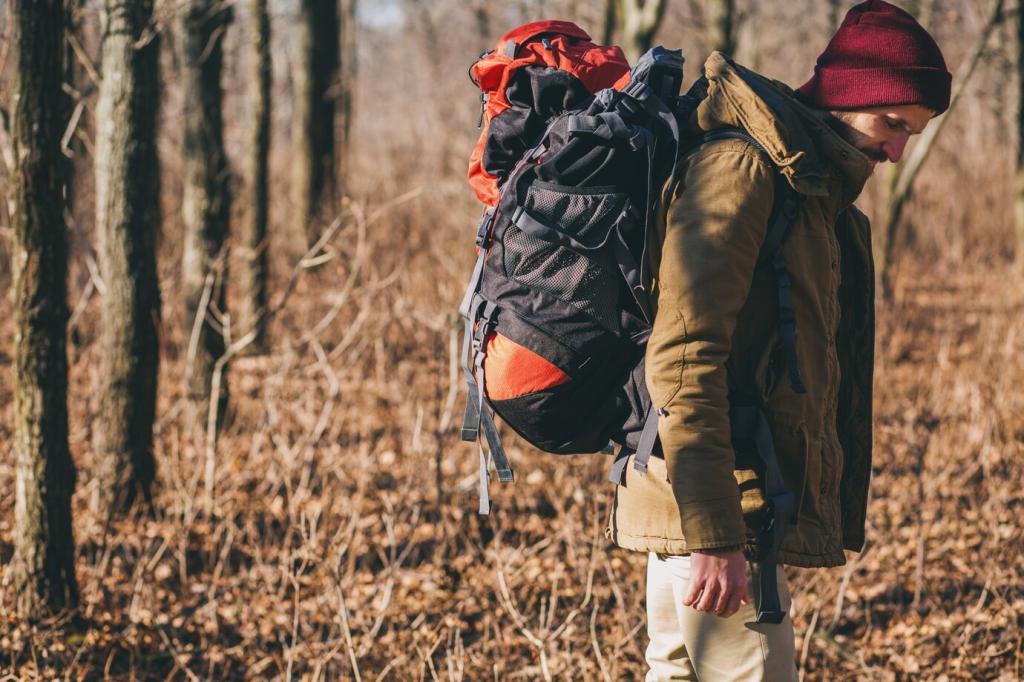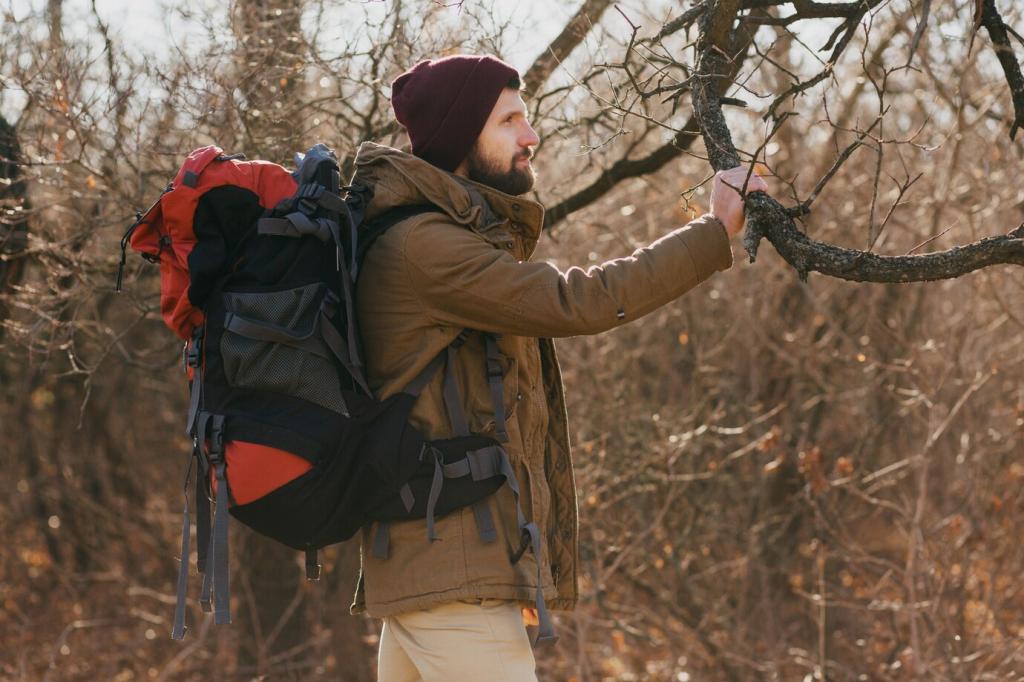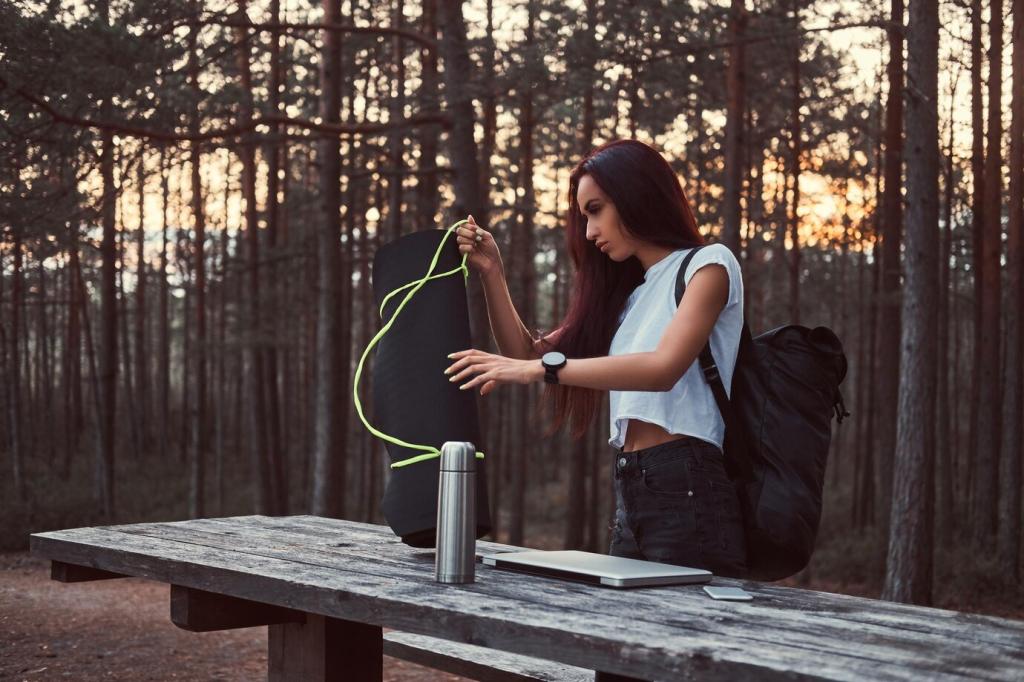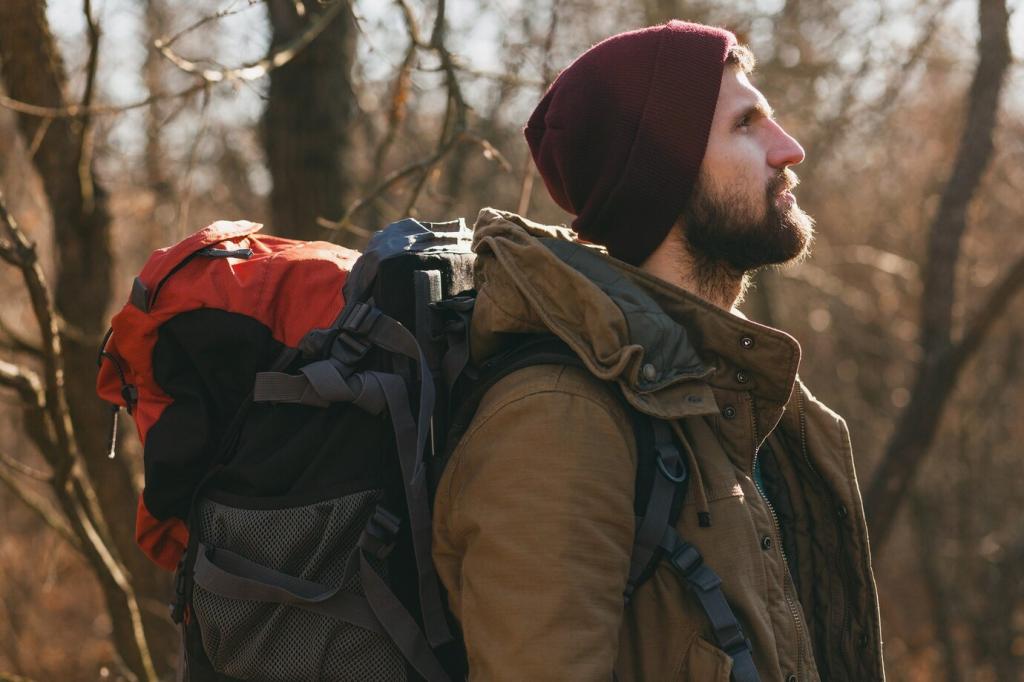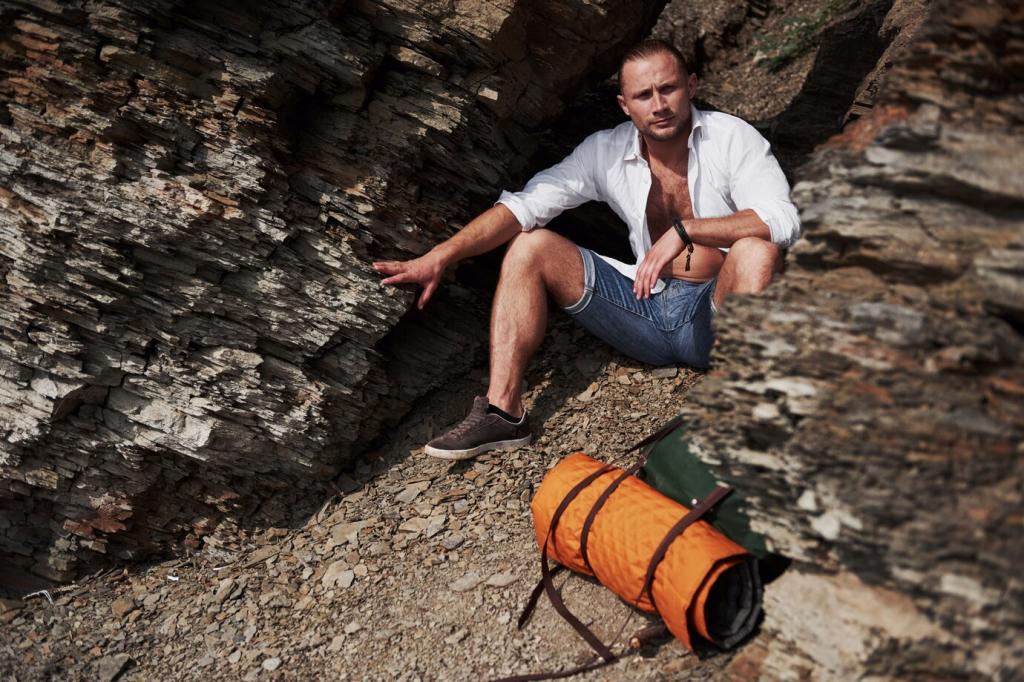Firecraft: From Spark to Steady Heat
Carry redundancy: a lighter for speed, stormproof matches for wind, and a ferro rod for wet surprises. Feather sticks and birch bark ignite readily; fatwood shavings add resinous reliability. Practice in calm weather first, so when rain arrives, your hands move instinctively rather than desperately.
Firecraft: From Spark to Steady Heat
Tipi fires start quickly and throw heat for hands. Log-cabin stacks burn steady and create cooking coals. A long fire parallel to your bed reflects warmth on frigid nights. After a freezing drizzle on the Superior Hiking Trail, a compact log cabin produced a stable ember bed for pasta and tea.

